If you’re a pizza lover who dreams of crafting delicious, restaurant-quality pizza at home, then investing in a pizza oven is a game-changer. Unlike conventional ovens, pizza ovens are designed to reach much higher temperatures, allowing you to achieve that perfect, crispy crust with bubbling cheese and evenly cooked toppings. With a good pizza oven, you can replicate the mouthwatering flavors and textures that are typically only found in your favorite pizzerias. There’s a wide range of pizza ovens available, each suited to different needs and preferences. From compact, electric models for small kitchens to traditional wood-fired ovens that bring an authentic taste to your backyard, there’s something for everyone. To truly elevate your pizza game, make restaurant-quality pizza at home by learning helpful tips and tricks that complement your oven purchase.
In this comprehensive guide, we’ll take a deep dive into the best pizza ovens for home use. We’ll cover everything you need to know, including the various types of ovens, essential features to look for, and the top models currently on the market. Whether you’re looking for a budget-friendly option or a professional-grade oven, we’ve got you covered. We’ll also provide helpful tips and advice on how to use your pizza oven effectively, so you can get the most out of your investment and impress your family and friends with perfect pizzas every time. Let’s get started on your path to becoming a home pizza pro!
Types of Pizza Ovens – Wood, Gas, Electric & Portable
Wood-Fired Pizza Ovens
Wood-fired pizza ovens are the gold standard for achieving that authentic, artisanal pizza experience. These ovens can reach temperatures as high as 900°F, which is essential for cooking pizzas in under two minutes. The high heat, combined with the smoky flavor imparted by burning wood, creates a unique taste and texture that is hard to replicate. Typically designed for outdoor use, these ovens are made from materials like brick or ceramic that retain and radiate heat effectively. For those interested in exploring outdoor pizza oven options, marketplaces like Home Depot offer a variety of models that fit different budgets and needs.
Pros:
- Authentic Taste and Texture: The wood smoke infuses the pizza with a distinctive flavor.
- High Cooking Temperatures: Can reach up to 900°F, allowing for quick cooking and a perfectly crisp crust.
Cons:
- Requires Wood and Maintenance: Regular refueling and cleaning of ash are necessary.
- Longer Preheating Time: It can take up to an hour to reach optimal cooking temperature.
Gas Pizza Ovens
Gas pizza ovens are a convenient alternative for those who want high heat without the hassle of managing a fire. These ovens heat up quickly and offer precise temperature control, making them user-friendly and consistent. They are versatile and can be used in various settings, including both outdoor and some well-ventilated indoor spaces. Popular models like the Ooni Koda 16 are favored for their ease of use and high performance.
Pros:
- Quick Preheating: Reaches cooking temperature in 20-30 minutes.
- Easy Temperature Regulation: Allows for more consistent results without the guesswork.
Cons:
- Lacks Smoky Flavor: Doesn’t impart the wood-fired taste.
- Requires a Gas Source: Needs a propane tank or natural gas connection.
Electric Pizza Ovens
Electric pizza ovens are the most practical choice for indoor cooking. They offer a controlled cooking environment and are ideal for those with limited outdoor space. While they may not reach the extreme temperatures of wood-fired or gas ovens, electric models like the Breville Smart Oven Pizzaiolo can still deliver a deliciously crispy crust and perfectly melted cheese. For more insight into advanced features of these ovens, check out the smart oven features that can elevate your cooking experience. These models are compact, making them suitable for kitchen countertops, and often come with pre-set options for various pizza styles.
Pros:
- Suitable for Indoor Use: Compact and safe to use inside the home.
- Consistent Performance: Reliable temperature control and cooking settings.
Cons:
- Limited to Lower Temperatures: Usually max out around 700°F, slower cooking compared to other types.
- Smaller Cooking Capacity: Typically designed for one pizza at a time.
Portable Pizza Ovens
Portable pizza ovens combine convenience and versatility, offering pizza lovers the freedom to cook anywhere—from the backyard to the campsite. These ovens are lightweight and easy to transport, making them a favorite for outdoor gatherings. Available in both gas and wood-fired models, they offer flexibility for different cooking preferences. Although they may not match the performance of full-sized ovens, models like the Ooni Karu still deliver impressive results.
Pros:
- Lightweight and Easy to Transport: Ideal for tailgating, camping, or small spaces.
- Versatile Cooking Options: Can use different fuel sources, depending on the model.
Cons:
- Limited Cooking Space: Typically accommodates smaller pizzas.
- Lower Maximum Temperatures: Some models may not achieve the high heat needed for quick cooking.
In choosing the right type of pizza oven, consider your cooking style, space, and how often you plan to use it. Each type offers unique benefits, so understanding their strengths and limitations can help you make an informed decision.
Choosing the Best Pizza Oven – Size, Space & Features
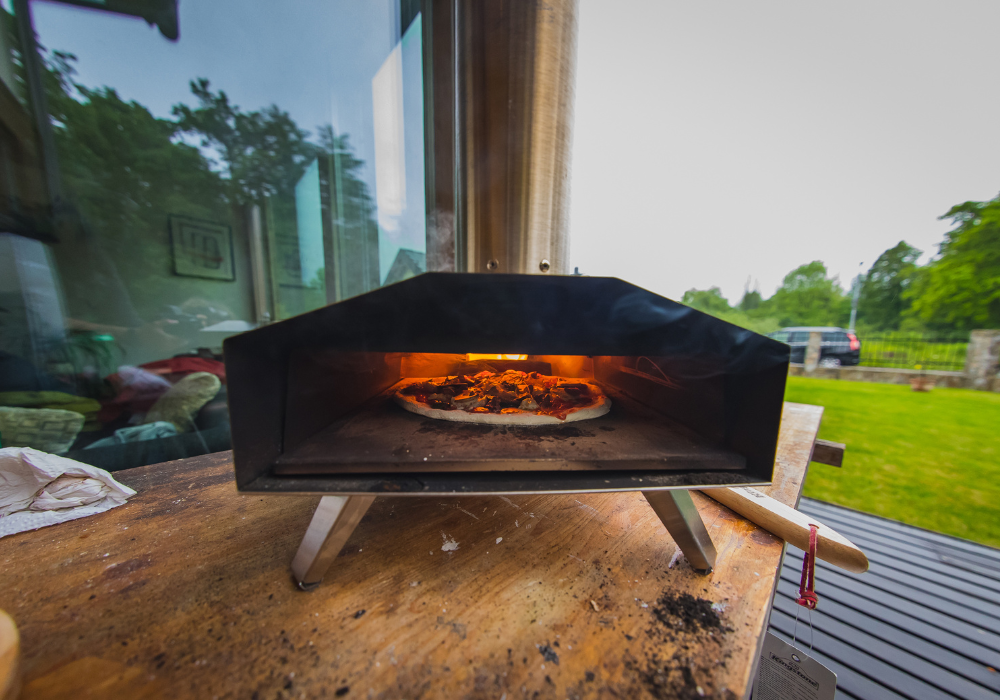
Size and Space
The size and space of your cooking area play a crucial role in selecting the right pizza oven. For indoor use, compact electric models like the Breville Smart Oven Pizzaiolo are ideal. They are small enough to fit on countertops and don’t require ventilation. For outdoor enthusiasts, wood-fired or gas ovens are better options as they need more space and can reach higher temperatures safely. Always ensure you have adequate storage and safe usage space, keeping in mind factors like wind direction and nearby structures for outdoor ovens.
Cooking Speed
Cooking speed is another essential factor to consider. Wood-fired and gas ovens are known for their ability to reach extremely high temperatures, typically between 800-900°F, which can cook a pizza in just 60-90 seconds. This quick cooking time is perfect for those who want to churn out multiple pizzas in a short period. In contrast, electric ovens usually have lower maximum temperatures, around 600-700°F, leading to a longer cooking time of 5-7 minutes per pizza. If speed is a priority, wood or gas options are more suitable.
Ease of Use
Ease of use varies significantly between different types of pizza ovens. Gas and electric models are generally user-friendly, with simple temperature controls and minimal maintenance. They are ideal for beginners who want a hassle-free experience. On the other hand, wood-fired ovens require more skill to manage the fire and temperature and demand regular cleaning of ash and soot. They offer a rewarding cooking experience with unique flavors but come with a steeper learning curve and more upkeep.
Budget
Your budget will largely influence your choice of pizza oven. Electric models tend to be more affordable, making them accessible to a broader range of consumers. They offer good value for indoor use but may lack the high heat needed for traditional-style pizzas. Gas and wood-fired ovens are generally more expensive, with premium models like the Gozney Dome or Ooni Pro costing several hundred dollars. These options are better for those who are serious about pizza making and willing to invest in quality. Always balance your budget with your needs, considering factors like frequency of use and desired cooking style.
Top-Rated Home Pizza Ovens – Reviews & Comparisons
1. Ooni Koda 16 (Gas)
The Ooni Koda 16 is a favorite among pizza enthusiasts for its convenience and performance. This gas-powered oven heats up to a blistering 932°F in just 20 minutes, allowing you to cook authentic, restaurant-quality pizzas in just 60-90 seconds. Its large cooking surface accommodates pizzas up to 16 inches, making it ideal for family gatherings or entertaining friends. The easy gas ignition and minimal setup mean you can get cooking quickly, without the hassle of managing wood or charcoal. It’s also relatively lightweight and portable, so you can easily move it around your backyard or take it on the go.
Key Features:
- Quick Heat-Up Time: Reaches up to 932°F in 20 minutes.
- Large Cooking Area: Spacious enough for large, 16-inch pizzas.
- Easy Gas Ignition: Simple and convenient setup with instant ignition.
2. Gozney Roccbox (Gas/Wood)
The Gozney Roccbox offers versatility and performance with its dual-fuel capability, allowing you to switch between gas and wood for different cooking experiences. This professional-grade oven is built to withstand high heat and maintain consistent temperatures, making it a favorite among serious home chefs. Its compact, portable design is perfect for outdoor cooking, and the insulated body ensures safety by reducing the risk of burns. The Roccbox also comes with a built-in thermometer, giving you precise control over cooking temperatures, whether you’re making Neapolitan pizzas or roasting vegetables.
Key Features:
- Dual-Fuel Flexibility: Switch between gas and wood for versatile cooking.
- High Heat Retention: Maintains consistent temperatures for perfect results.
- Compact and Portable: Easy to transport and store, ideal for small spaces.
3. Breville Smart Oven Pizzaiolo (Electric)
The Breville Smart Oven Pizzaiolo brings the authentic experience of a wood-fired pizza oven indoors with its innovative design. This electric oven can reach temperatures of up to 750°F, high enough to replicate the cooking conditions of a traditional pizzeria. It features multiple cooking modes, such as wood-fired, New York-style, and frozen pizza, each tailored to provide the best results for different styles of pizza. The compact design fits comfortably on most kitchen countertops, making it a great option for those who want to enjoy gourmet pizza without the need for outdoor space or a gas connection.
Key Features:
- Indoor Use: Safe and convenient for indoor cooking.
- Multiple Cooking Modes: Presets for various pizza styles.
- Compact Design: Fits well in most kitchens, perfect for home cooks with limited space.
Each of these top pizza ovens brings something unique to the table, whether it’s the high temperatures of the Ooni Koda 16, the versatility of the Gozney Roccbox, or the convenience of the Breville Smart Oven Pizzaiolo. Your choice will depend on your cooking style, space availability, and whether you prefer indoor or outdoor cooking.
Essential Pizza Oven Tools – Stones, Peels & Thermometers
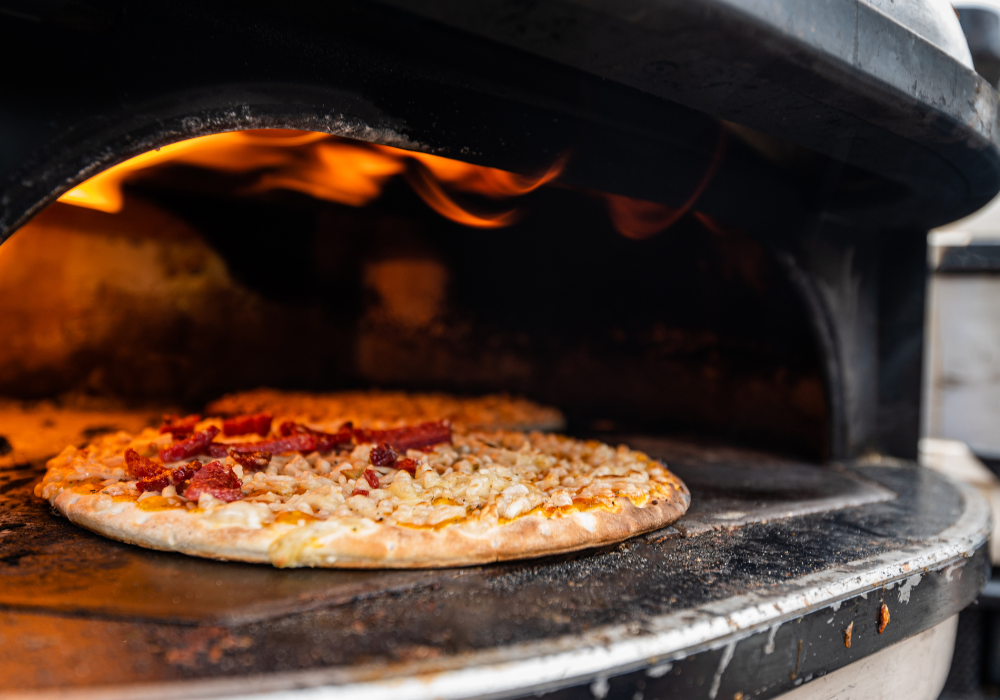
When using a pizza oven, having the right accessories can significantly improve your cooking experience and ensure better results. Here are three must-have tools for making the most of your pizza oven:
Pizza Stone
A pizza stone is an essential accessory for achieving a perfectly crispy crust. Made from materials like ceramic or cordierite, it absorbs and retains heat, ensuring even heat distribution across the pizza base. This prevents soggy crusts and helps mimic the intense, even heat of a brick oven. Preheat the stone along with your oven, and then place the pizza directly on it for that deliciously crispy finish.
Pizza Peel
A pizza peel is a flat, paddle-like tool used to slide pizzas in and out of the oven safely. It’s crucial for handling pizzas in high-heat ovens where traditional methods would be cumbersome and unsafe. Peels come in various materials, including wood, metal, and composite. A wooden peel is great for transferring uncooked pizzas as the dough doesn’t stick as easily, while a metal peel is perfect for turning and retrieving cooked pizzas.
Infrared Thermometer
An infrared thermometer is invaluable for monitoring the exact temperature of your pizza oven. Pizza ovens can vary greatly in temperature, and knowing when your stone or cooking surface is at the right temperature is key to achieving a perfect bake. Simply point the thermometer at the cooking surface to get an instant, accurate reading. This tool ensures that your oven is neither too hot nor too cold, allowing for consistent, evenly cooked pizzas every time.
These accessories are not just add-ons but essential tools that elevate your pizza-making experience, helping you achieve the best results with your home pizza oven.
Pizza Oven Cooking Tips – Preheating, Dough & Timing
Preheat Properly
Proper preheating is essential for achieving a perfectly cooked pizza with a crispy crust. Whether you’re using a wood-fired, gas, or electric oven, make sure to allow enough time for the oven to reach its optimal temperature, which typically ranges from 700°F to 900°F, depending on the oven type. Preheating ensures that the pizza cooks evenly from the bottom up, preventing soggy crusts and undercooked centers. For best results, let the oven preheat for at least 20-30 minutes before baking.
Use the Right Dough
The type of dough you use plays a significant role in how well your pizza turns out in a high-heat oven. Traditional pizza doughs, made with high-protein flour, yeast, water, and salt, are ideal for high-temperature cooking as they can withstand intense heat without burning quickly. If using store-bought dough, ensure it is labeled for high-heat cooking or Neapolitan-style pizza. Avoid overly hydrated or thin doughs, as they may burn or become too crispy in the high heat of a pizza oven.
Rotate the Pizza
Rotating your pizza halfway through the cooking process is crucial for even cooking. Pizza ovens, especially wood-fired ones, can have hot spots due to the placement of the fire or heat source. By turning the pizza 180 degrees with a pizza peel, you ensure that all sides receive the same amount of heat. This prevents one side from becoming too charred while the other remains undercooked. A quick, gentle turn is all it takes to achieve a perfectly balanced bake with a crispy crust and evenly melted toppings.
Avoiding Common Pizza Oven Mistakes for Perfect Pizzas
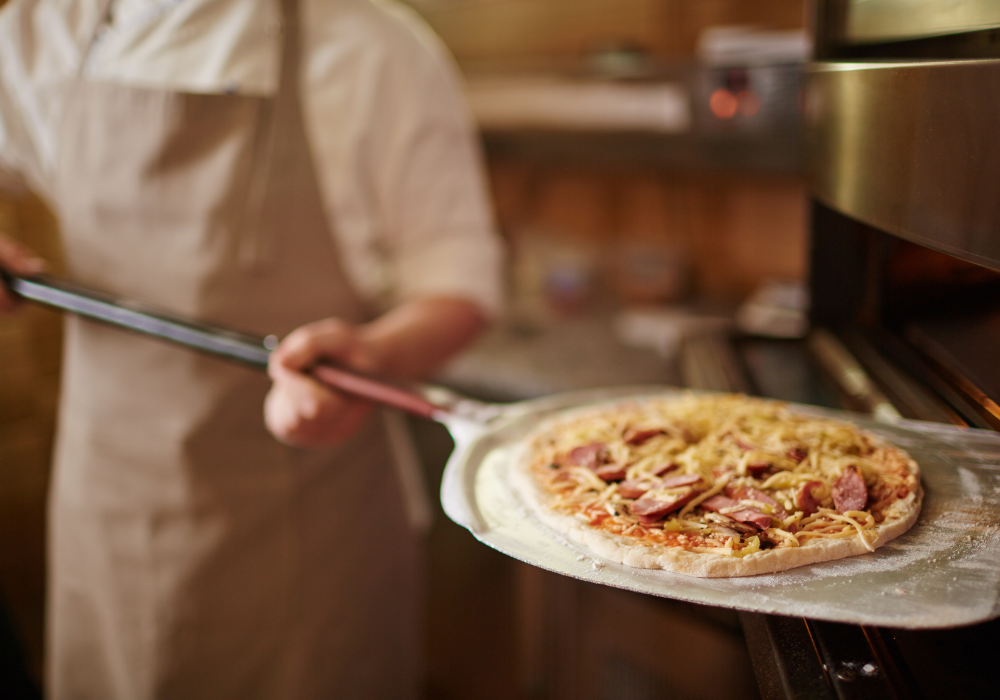
Overloading with Toppings
One of the most common mistakes when making pizza at home is overloading the dough with too many toppings. While it may be tempting to pile on all your favorite ingredients, too much can weigh down the dough, making it difficult to cook evenly. This often results in a soggy center and an undercooked crust. To avoid this, stick to a few well-balanced toppings and spread them evenly across the pizza. A lighter topping load ensures that the crust cooks properly, achieving that desired crispy texture.
Not Preheating
Preheating your pizza oven is crucial for achieving a perfectly cooked pizza. Skipping this step or not allowing enough time for the oven to reach the recommended temperature can lead to uneven cooking, a soft crust, and undercooked toppings. Most pizza ovens need to be heated to at least 700°F to 900°F, depending on the type. Make sure to preheat the oven for at least 20-30 minutes before baking your pizza. This ensures the cooking surface is hot enough to crisp the crust quickly and evenly.
Using Wet Dough
Wet dough can be challenging to work with, making it difficult to transfer to the oven and resulting in a pizza that sticks to the peel or baking surface. High moisture content in the dough can also lead to a soggy base that doesn’t cook properly in a high-heat environment. To avoid this, make sure your dough is not too sticky or hydrated. If you notice the dough is wet, add a small amount of flour while kneading to reach the right consistency. A well-balanced dough should be soft but firm enough to hold its shape when stretched and baked.
FAQs
1. Can I use a pizza oven indoors?
Yes, electric models like the Breville Smart Oven Pizzaiolo are designed for indoor use. They are compact, safe, and produce less smoke, making them suitable for home kitchens.
2. What’s the best pizza oven for beginners?
Gas ovens like the Ooni Koda 16 are easy to use with quick ignition and consistent results, making them ideal for beginners.
3. How long does it take to cook a pizza in a wood-fired oven?
Typically, a wood-fired oven can cook a pizza in 60-90 seconds due to its high temperatures.
4. Can I use my pizza oven for other types of cooking?
Yes, many pizza ovens can be used for roasting vegetables, baking bread, or even grilling meats, making them versatile cooking tools beyond just pizzas.
5. How do I clean and maintain a pizza oven?
For gas and electric models, let the oven cool, then wipe down the interior with a damp cloth. For wood-fired ovens, remove ash and debris after each use, and occasionally brush the interior to prevent buildup.
6. What kind of surface should I place my pizza oven on?
Place your pizza oven on a sturdy, heat-resistant surface. For outdoor ovens, use a heat-resistant table or stand designed for the oven. Ensure there is adequate ventilation and that the surface can withstand the oven’s weight and high temperatures.
Conclusion
Choosing the right pizza oven is an exciting decision that can greatly enhance your home cooking experience. It’s not just about making pizza; it’s about finding the right tool that fits your lifestyle and culinary preferences. If you love the traditional taste and don’t mind the maintenance, a wood-fired oven is perfect for you. For those who value convenience and quick setup, a gas oven might be the ideal choice. And if you’re looking for a safe, indoor-friendly option, an electric oven could be your go-to. Pizza ovens are evolving to offer versatility beyond just pizza, aligning with the future of kitchen appliances, where multifunctionality is key. Consider your space—whether it’s a cozy kitchen or a spacious backyard—and your budget, as prices can vary significantly between different types and models. Whatever you choose, investing in a quality pizza oven will allow you to craft delicious, homemade pizzas with ease and impress your family and friends. So, take the plunge, find your perfect oven, and enjoy the art of pizza making at home. Happy pizza baking!
Share this content:
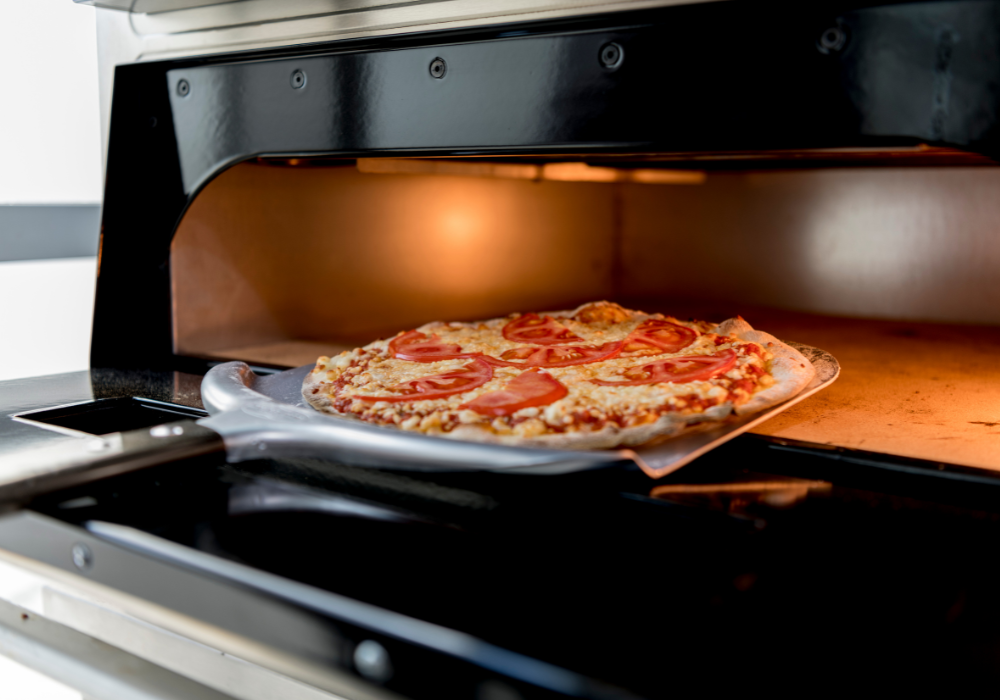
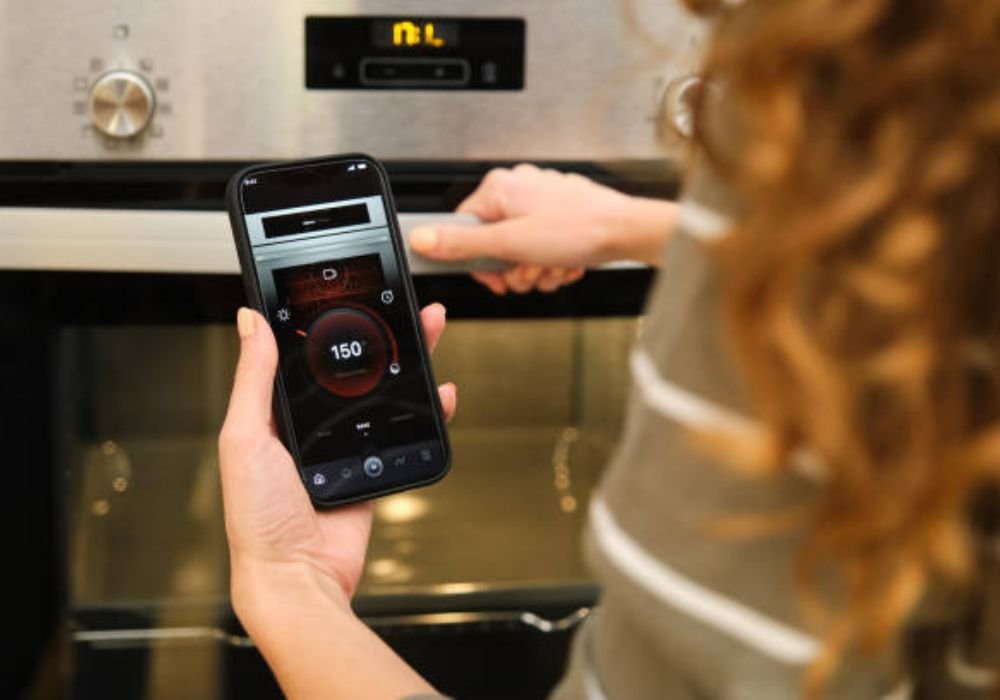
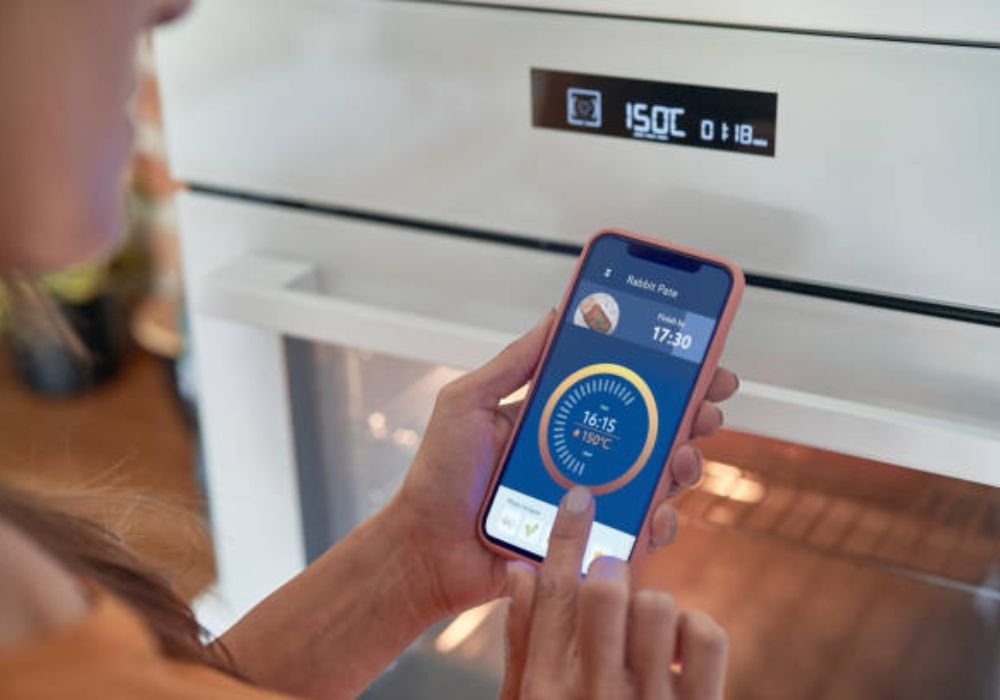
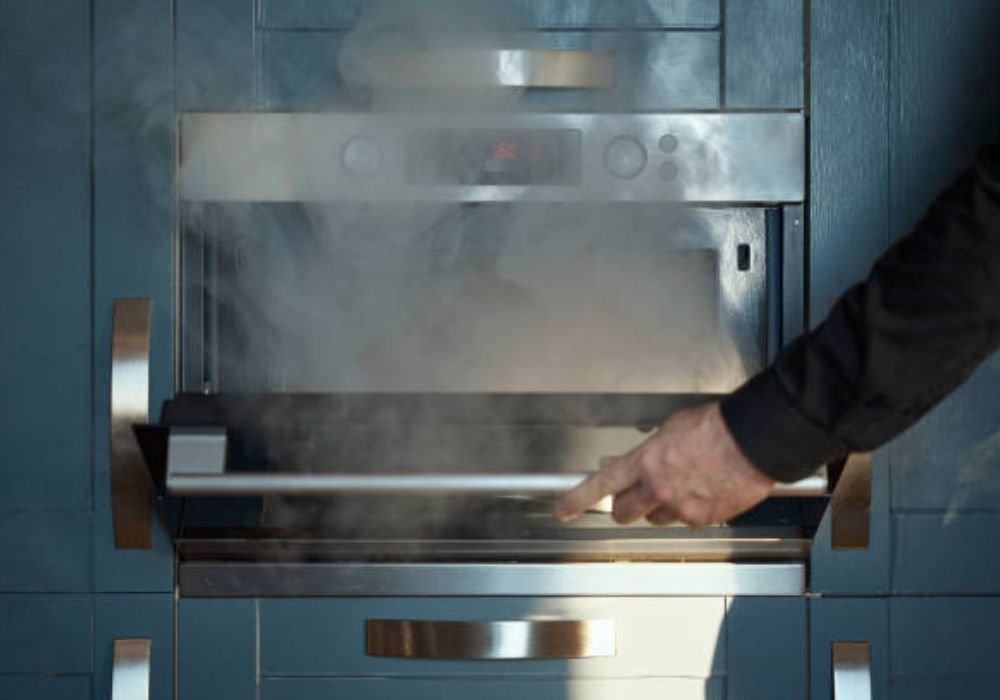








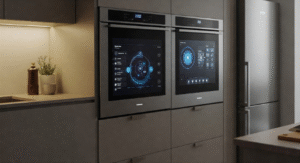


2 comments